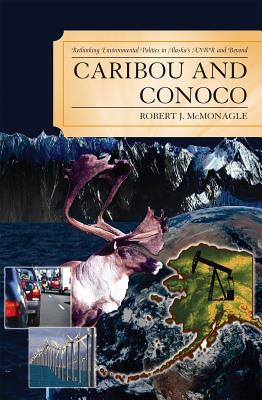Step by step, this book shatters the myth that important environmental energy debates in the United States have been driven by forces too complex for the average American to comprehend. Although made up of a number of contributions, Robert McMonagle’s book makes sense of the underlying political and societal forces driving contemporary environmental energy debates including the critical case of whether to drill for energy sources at the Arctic National Wildlife Refuge (ANWR) in Alaska. This book aims to answer two questions by examining four case studies of the policy-making process: the Arctic National Wildlife Refuge; drilling on public lands in the Western United States and in the Eastern Gulf of Mexico; along with a proposal to develop a commercial wind farm off the Massachusetts coast. First, what political and societal forces have shaped modern, contentious environmental energy debates in the US? Second, what do the findings reveal about the way in which environmental energy policies are made, about our institutions of government, and about the influences of the public versus elites in making policy? Dr. McMonagle finds that partisan voting in Congress is a critical factor in policy shifts, especially when symbols are used to define policy issues. Further, public opinion and the print media remain important factors in defining issues leading to legislative policy victories.
| FindBook |
有 1 項符合
Caribou and Conoco: Rethinking Environmental Politics in Alaska’s Anwr and Beyond的圖書 |
 |
Caribou and Conoco: Rethinking Environmental Politics in Alaska’s Anwr and Beyond 作者:Mcmonagle 出版社:Lexington Books 出版日期:2009-08-16 語言:英文 規格:平裝 / 248頁 / 22.6 x 15 x 1.8 cm / 普通級 |
| 圖書館借閱 |
| 國家圖書館 | 全國圖書書目資訊網 | 國立公共資訊圖書館 | 電子書服務平台 | MetaCat 跨館整合查詢 |
| 臺北市立圖書館 | 新北市立圖書館 | 基隆市公共圖書館 | 桃園市立圖書館 | 新竹縣公共圖書館 |
| 苗栗縣立圖書館 | 臺中市立圖書館 | 彰化縣公共圖書館 | 南投縣文化局 | 雲林縣公共圖書館 |
| 嘉義縣圖書館 | 臺南市立圖書館 | 高雄市立圖書館 | 屏東縣公共圖書館 | 宜蘭縣公共圖書館 |
| 花蓮縣文化局 | 臺東縣文化處 |
|
|
圖書介紹 - 資料來源:博客來 評分:
圖書名稱:Caribou and Conoco: Rethinking Environmental Politics in Alaska’s Anwr and Beyond
|











